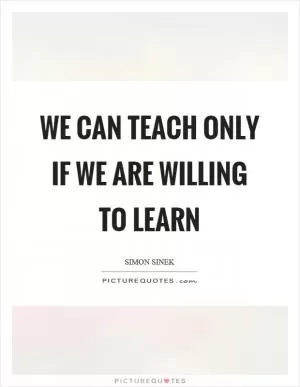The proverb teaches us about the importance of recognizing and respecting differences in appreciation and understanding. Key takeaways from this wisdom include managing expectations, especially when others don’t share your enthusiasm for certain interests. It also emphasizes patience in teaching, understanding that complex concepts take time to grasp. By avoiding frustration and choosing the right audience, you can share your passions more effectively. The article also highlights the significance of personal growth through self-reflection and seeking diverse experiences. In professional settings, clear communication and valuing colleagues’ perspectives enhance teamwork. Fostering inclusivity and encouraging curiosity help create environments where everyone feels valued. Ultimately, appreciating expertise and learning from others enriches our interactions and relationships.
Who is This Article For and How Can They Use This
This article is for anyone looking to deepen their understanding of human interactions and improve their communication skills. Whether you are a teacher, a manager, a student, or someone seeking personal growth, the wisdom of the proverb “बन्दर क्या जाने अदरक का स्वाद” offers valuable insights into the importance of appreciating and understanding different perspectives.
 Teachers can use this article to develop patience and effective teaching strategies, recognizing that students may need time to grasp complex concepts. Managers and leaders can apply the principles discussed to foster a more inclusive and understanding work environment, enhancing team dynamics and communication. Students and lifelong learners will benefit from the encouragement to explore new areas of knowledge and expand their horizons.
Teachers can use this article to develop patience and effective teaching strategies, recognizing that students may need time to grasp complex concepts. Managers and leaders can apply the principles discussed to foster a more inclusive and understanding work environment, enhancing team dynamics and communication. Students and lifelong learners will benefit from the encouragement to explore new areas of knowledge and expand their horizons.
On a personal level, this article helps individuals manage their expectations and avoid frustration when their passions and interests are not immediately understood or appreciated by others. By promoting self-reflection and the value of learning from diverse viewpoints, readers can cultivate a more empathetic and open-minded approach to their interactions.
In essence, this article serves as a guide for anyone striving to build more meaningful and respectful relationships, both personally and professionally. By implementing the wisdom of this ancient proverb, readers can navigate the complexities of human interactions with greater ease and understanding, ultimately leading to more fulfilling and harmonious connections.
In-Depth Meaning of the Proverb
The proverb “बन्दर क्या जाने अदरक का स्वाद” (bandar kya jaane adrak ka swad) has deep roots in Hindi literature and culture. Originating from everyday observations and storytelling traditions, this proverb succinctly captures the idea that some individuals lack the ability to appreciate certain things due to their limited experience or understanding. Hindi literature, rich in its use of metaphors and proverbs, often employs such phrases to convey moral lessons or practical wisdom. This particular proverb has been used in various contexts to highlight the importance of knowledge, experience, and appreciation.
 The metaphor of a monkey and ginger is particularly telling. Monkeys are often seen as playful and curious animals but are not known for their discerning taste or appreciation for complex flavors. Ginger, on the other hand, is a spice with a strong, distinct taste that requires a developed palate to appreciate fully. By juxtaposing these two elements, the proverb vividly illustrates the idea that certain levels of understanding or sophistication are necessary to recognize the true value of some things. This choice of metaphor resonates because it uses familiar elements to convey a deeper truth about human nature and perception.
The metaphor of a monkey and ginger is particularly telling. Monkeys are often seen as playful and curious animals but are not known for their discerning taste or appreciation for complex flavors. Ginger, on the other hand, is a spice with a strong, distinct taste that requires a developed palate to appreciate fully. By juxtaposing these two elements, the proverb vividly illustrates the idea that certain levels of understanding or sophistication are necessary to recognize the true value of some things. This choice of metaphor resonates because it uses familiar elements to convey a deeper truth about human nature and perception.
The broader implications of this proverb extend to recognizing and appreciating value and expertise. In everyday life, people frequently encounter situations where their efforts or interests are not fully understood or appreciated by others. This proverb serves as a reminder that lack of appreciation is often due to a gap in knowledge or experience rather than a reflection of the intrinsic value of the subject at hand. It encourages individuals to be patient and understanding, recognizing that appreciation and understanding can vary widely among different people.
In professional settings, this proverb can be particularly relevant. When introducing new ideas or projects, it’s important to acknowledge that not everyone will immediately grasp their significance. This understanding can lead to more effective communication strategies, where the focus is on bridging the gap in knowledge and helping others see the value in new concepts. It also encourages professionals to value the expertise of their colleagues, understanding that diverse perspectives can enrich their own understanding and lead to better outcomes.
 In personal relationships, the proverb underscores the importance of empathy and patience. When sharing interests or passions with friends and family, it’s crucial to recognize that not everyone will share the same level of enthusiasm or insight. This understanding can prevent feelings of frustration and help maintain harmonious relationships. By accepting that appreciation often comes with familiarity and exposure, individuals can create more supportive and understanding environments.
In personal relationships, the proverb underscores the importance of empathy and patience. When sharing interests or passions with friends and family, it’s crucial to recognize that not everyone will share the same level of enthusiasm or insight. This understanding can prevent feelings of frustration and help maintain harmonious relationships. By accepting that appreciation often comes with familiarity and exposure, individuals can create more supportive and understanding environments.
Moreover, the proverb can inspire personal growth. Reflecting on one’s own limitations and seeking to expand knowledge and experience can lead to a deeper appreciation for diverse subjects. It encourages an open-minded approach to learning and understanding, fostering a lifelong curiosity and a willingness to explore new areas.
The proverb also has a significant cultural dimension, especially in multicultural settings. Understanding that people from different backgrounds may have varied tastes and appreciations can promote inclusivity and respect. It encourages an open-minded approach to cultural differences, where the goal is to learn and share rather than judge or dismiss.
In summary, the proverb “बन्दर क्या जाने अदरक का स्वाद” offers a wealth of wisdom about understanding and appreciation. By acknowledging that not everyone will immediately recognize the value of certain things, it promotes patience, empathy, and effective communication. It also encourages personal and professional growth through continuous learning and an open-minded approach to diverse perspectives. Ultimately, this ancient piece of wisdom can help individuals navigate the complexities of human interactions with greater ease and understanding.
Cross-Cultural Relevance : ‘Lack of Appreciation due to Ignorance ‘
The concept encapsulated by the Hindi proverb “बन्दर क्या जाने अदरक का स्वाद” (bandar kya jaane adrak ka swad) finds parallels in many cultures around the world. These proverbs, though rooted in different traditions and languages, convey a similar message about the limitations of appreciation due to a lack of understanding or experience.
 In English, the proverb “Pearls before swine” is a well-known expression. It implies offering something valuable to someone who does not recognize its worth, much like presenting pearls to pigs who cannot appreciate their beauty or value. This phrase highlights the futility of giving valuable items or insights to those who are incapable of understanding or appreciating them.
In English, the proverb “Pearls before swine” is a well-known expression. It implies offering something valuable to someone who does not recognize its worth, much like presenting pearls to pigs who cannot appreciate their beauty or value. This phrase highlights the futility of giving valuable items or insights to those who are incapable of understanding or appreciating them.
The Japanese proverb “Gold coins to a cat” carries a similar meaning. It describes a situation where something precious is given to someone who cannot appreciate it, much like a cat would not understand the value of gold coins. This proverb emphasizes the importance of recognizing the right audience for valuable gifts or information.
In Persian culture, the saying “The ox does not know the value of grass” reflects the same idea. It suggests that just as an ox may not understand the quality of the grass it feeds on, some people are unable to appreciate the value of what they have due to their ignorance or lack of discernment.
These proverbs illustrate the universality of the concept that appreciation and understanding are often limited by one’s experience and knowledge. Across cultures, this wisdom teaches us about the importance of patience, empathy, and the careful consideration of our audience when sharing valuable insights or resources. It underscores the need to recognize and bridge gaps in understanding to foster better communication and appreciation in various aspects of life.
Explanation and Analysis
Misunderstandings or lack of appreciation often arise in various scenarios, both personal and professional. For instance, a person passionate about classical music might feel frustrated when friends or family show little interest or fail to recognize the nuances that make it beautiful. In the workplace, an employee might introduce an innovative idea only to find that colleagues dismiss it due to a lack of understanding of its potential impact. These situations illustrate how differing levels of knowledge and experience can lead to a disconnect in appreciation.
 From a psychological perspective, several factors contribute to why people might fail to appreciate certain things. Cognitive biases, such as the Dunning-Kruger effect, suggest that individuals with limited knowledge in a particular area may overestimate their understanding and undervalue more nuanced insights. Additionally, people are often influenced by their own interests, experiences, and cultural backgrounds, which shape their perceptions and what they find valuable. When something falls outside their realm of familiarity, they may struggle to see its worth.
From a psychological perspective, several factors contribute to why people might fail to appreciate certain things. Cognitive biases, such as the Dunning-Kruger effect, suggest that individuals with limited knowledge in a particular area may overestimate their understanding and undervalue more nuanced insights. Additionally, people are often influenced by their own interests, experiences, and cultural backgrounds, which shape their perceptions and what they find valuable. When something falls outside their realm of familiarity, they may struggle to see its worth.
Moreover, the human brain is wired to conserve energy and prioritize information that seems immediately relevant or beneficial. This means that new or complex ideas requiring significant cognitive effort to understand might be readily dismissed if they do not appear to offer an obvious or immediate reward. This natural tendency can make it challenging for people to appreciate things that are outside their usual scope of interest or expertise.
To foster appreciation and understanding in others, several strategies can be effective. First, education and exposure are key. Providing clear, relatable explanations and creating opportunities for people to experience and learn about new things can gradually build their appreciation. For example, sharing accessible resources or organizing introductory workshops can help demystify complex subjects.
 Encouraging curiosity and an open-minded attitude is another important strategy. By promoting a culture of continuous learning and exploration, individuals become more inclined to venture beyond their comfort zones. This can be achieved through creating environments where questions are welcomed and diverse perspectives are valued.
Encouraging curiosity and an open-minded attitude is another important strategy. By promoting a culture of continuous learning and exploration, individuals become more inclined to venture beyond their comfort zones. This can be achieved through creating environments where questions are welcomed and diverse perspectives are valued.
Effective communication is also crucial. Tailoring your message to the audience’s level of understanding can bridge gaps in knowledge. Using analogies and examples that resonate with their experiences can make new concepts more relatable and easier to grasp. Patience and empathy play a significant role here, as understanding often takes time and repeated exposure.
Finally, recognizing and celebrating small steps of progress can reinforce positive attitudes toward learning and appreciation. Acknowledging efforts and improvements, no matter how minor, can motivate individuals to continue exploring and valuing new areas.
By implementing these strategies, we can help others move past initial misunderstandings or lack of appreciation, fostering a more inclusive and appreciative environment. This not only enhances individual growth but also enriches collective experiences and interactions.
Actionable Steps for Implementing the Wisdom in Daily Life
Managing Expectations and Avoiding Frustration
 Managing Expectations: Understand that not everyone will appreciate or understand the things you value. For example, if you’re passionate about a particular art form or hobby, accept that others might not share the same enthusiasm or insight. This acknowledgment helps in setting realistic expectations and prevents disappointment when your interests are not met with the same level of excitement.
Managing Expectations: Understand that not everyone will appreciate or understand the things you value. For example, if you’re passionate about a particular art form or hobby, accept that others might not share the same enthusiasm or insight. This acknowledgment helps in setting realistic expectations and prevents disappointment when your interests are not met with the same level of excitement.
Avoiding Frustration: If someone dismisses something you care about, don’t take it personally. Recognize that their lack of appreciation is due to their limited experience or knowledge, not a reflection of the thing’s value. This perspective shift can help you maintain emotional balance and prevent feelings of frustration or rejection.
Setting Realistic Goals: If you’re introducing someone to a new concept or skill, set realistic expectations for their learning curve. Understand that mastery and appreciation take time and exposure. By setting incremental goals and celebrating small achievements, you can help others gradually build their understanding and appreciation, making the learning process more enjoyable and less daunting for them.
Effective Communication and Teaching
 Patience in Teaching: When explaining something complex or nuanced to someone inexperienced, remember that they might not grasp its importance right away. Be patient and willing to educate them. Approach the teaching process with empathy, breaking down complex ideas into simpler, digestible parts and providing ample opportunities for questions and discussions.
Patience in Teaching: When explaining something complex or nuanced to someone inexperienced, remember that they might not grasp its importance right away. Be patient and willing to educate them. Approach the teaching process with empathy, breaking down complex ideas into simpler, digestible parts and providing ample opportunities for questions and discussions.
Choosing Your Audience: Share your passions and interests with those who are more likely to understand and appreciate them. This can lead to more meaningful and fulfilling interactions. Identifying the right audience ensures that your efforts are met with genuine interest and enthusiasm, creating a more supportive environment for your ideas and passions.
Constructive Feedback: When giving feedback, especially on something requiring specialized knowledge, be aware of the recipient’s background. Tailor your feedback in a way that bridges their understanding. Use clear, relatable language and examples that resonate with their experiences. Constructive feedback should aim to educate and inspire, rather than criticize, fostering a positive learning atmosphere.
Personal and Professional Growth
 Personal Growth: Reflect on areas where you might be the “monkey” not appreciating the “ginger.” Seek to expand your knowledge and experiences to develop a deeper appreciation for diverse subjects. Embrace a mindset of continuous learning and curiosity, actively exploring new ideas and perspectives. By challenging your own assumptions and broadening your horizons, you can cultivate a deeper understanding and respect for the richness of different cultures, interests, and disciplines.
Personal Growth: Reflect on areas where you might be the “monkey” not appreciating the “ginger.” Seek to expand your knowledge and experiences to develop a deeper appreciation for diverse subjects. Embrace a mindset of continuous learning and curiosity, actively exploring new ideas and perspectives. By challenging your own assumptions and broadening your horizons, you can cultivate a deeper understanding and respect for the richness of different cultures, interests, and disciplines.
Professional Settings: In a work environment, recognize that colleagues might not always see the value in certain tasks or projects. Use this understanding to communicate more effectively and build a stronger case for your ideas. Tailor your communication to highlight the benefits and significance of your proposals, aligning them with organizational goals and demonstrating their potential impact. This approach not only enhances your professional credibility but also fosters a collaborative and supportive work culture.
Self-Reflection: Regularly reflect on your own biases and gaps in knowledge. This humility can lead to greater empathy and a willingness to understand and appreciate what others value. Take time to examine your assumptions and perspectives, actively seeking feedback and different viewpoints. By cultivating self-awareness and openness to growth, you can contribute positively to personal relationships, professional interactions, and broader community engagement.
Fostering Understanding and Inclusivity
 Understanding Cultural Differences: In multicultural settings, recognize that people from different backgrounds may not appreciate certain customs, foods, or traditions. Approach these differences with an open mind and willingness to share insights. Embrace diversity as an opportunity to learn and broaden your own perspectives. Engage in respectful dialogue and seek to understand the cultural contexts that shape others’ viewpoints.
Understanding Cultural Differences: In multicultural settings, recognize that people from different backgrounds may not appreciate certain customs, foods, or traditions. Approach these differences with an open mind and willingness to share insights. Embrace diversity as an opportunity to learn and broaden your own perspectives. Engage in respectful dialogue and seek to understand the cultural contexts that shape others’ viewpoints.
Promoting Inclusivity: Create environments where people feel comfortable expressing their interests and passions, even if they are niche or specialized. This promotes a culture of mutual respect and appreciation. Encourage inclusivity by valuing diverse contributions and actively inviting participation from individuals with varied backgrounds and experiences.
Personal Relationships: In personal relationships, acknowledge that your partner, friends, or family members might not share the same interests or understand certain things the way you do. Respect their different tastes and find common ground. Foster open communication and empathy, appreciating each other’s unique perspectives and supporting each other’s individual interests and passions. Building a foundation of mutual respect strengthens relationships and creates a supportive environment where differences are celebrated.
Encouraging Curiosity and Appreciating Expertise
 Encouraging Exploration: Encourage others to explore and learn about new things rather than dismissing them outright. This fosters a culture of curiosity and continuous learning. Emphasize the value of broadening one’s horizons and discovering new interests. By promoting an environment where curiosity is celebrated, individuals feel empowered to pursue knowledge and expand their understanding of the world around them.
Encouraging Exploration: Encourage others to explore and learn about new things rather than dismissing them outright. This fosters a culture of curiosity and continuous learning. Emphasize the value of broadening one’s horizons and discovering new interests. By promoting an environment where curiosity is celebrated, individuals feel empowered to pursue knowledge and expand their understanding of the world around them.
Appreciating Expertise: Value the expertise of others in areas where you might lack knowledge. Recognize that your understanding might be limited and seek to learn from those with more experience. Respect and acknowledge the insights and skills that others bring to the table. Embracing diverse expertise enriches collaborative efforts and fosters a spirit of mutual respect and learning.
Learning from Others: When encountering someone who seems uninterested or dismissive of something important to you, consider it an opportunity to learn about their perspective. This can help you better understand diverse viewpoints. Approach discussions with curiosity and openness, seeking to bridge gaps in understanding and uncover common ground. By actively listening and learning from others’ experiences, you can cultivate empathy and broaden your own perspectives.
Conclusion
In exploring the timeless wisdom of the proverb “बन्दर क्या जाने अदरक का स्वाद” (bandar kya jaane adrak ka swad), we’ve delved into profound insights about appreciation, understanding, and bridging cultural divides. This proverb teaches us to acknowledge that not everyone shares our perspectives or values, and that patience and empathy are essential in fostering meaningful connections. By managing expectations and avoiding frustration, we can navigate differences with grace and understanding, whether in personal relationships or professional settings.
 Effective communication and teaching strategies empower us to convey our passions and ideas effectively, ensuring that our messages resonate with our audiences. Personal and professional growth thrive on self-reflection, inclusivity, and the appreciation of diverse expertise. Embracing curiosity and encouraging exploration enriches our lives with continuous learning and discovery.
Effective communication and teaching strategies empower us to convey our passions and ideas effectively, ensuring that our messages resonate with our audiences. Personal and professional growth thrive on self-reflection, inclusivity, and the appreciation of diverse expertise. Embracing curiosity and encouraging exploration enriches our lives with continuous learning and discovery.
As we conclude, I encourage you to reflect on how these insights resonate with your own experiences. Share your feedback and thoughts with others to promote dialogue and understanding in your community. Additionally, consider supporting organizations like the Meda Foundation, which champions cultural understanding and inclusivity through education and community outreach. Your contributions can make a significant impact in fostering a more connected and empathetic world.
In a world where differences often divide us, let us embrace the wisdom of “बन्दर क्या जाने अदरक का स्वाद,” reminding ourselves to approach each interaction with curiosity, respect, and a willingness to learn. Together, we can build bridges of understanding and create a future where appreciation for diverse perspectives enriches our collective journey.
Sources and References
- Hofstede, G. (2001). Culture’s Consequences: Comparing Values, Behaviors, Institutions, and Organizations Across Nations.
- Dweck, C. S. (2006). Mindset: The New Psychology of Success.
- Brown, B. (2012). Daring Greatly: How the Courage to Be Vulnerable Transforms the Way We Live, Love, Parent, and Lead.
- Thomas, D. C., & Inkson, K. (2004). Cultural Intelligence: People Skills for Global Business.
- Ngozi Adichie, C. (2009). The Danger of a Single Story. TED Talk.
- Bradberry, T., & Greaves, J. (2009). Emotional Intelligence 2.0.
- Alexander, L. (2015). Why Cultural Competency Matters in Health Care.
- Hanh, T. N. (2013). The Art of Communicating.
- Flynn, P. M. (2002). Understanding Cultural Diversity and Learning.
- Senge, P. M. (2006). The Fifth Discipline: The Art & Practice of The Learning Organization.
- Tarvin, A. (2018). The Skill of Humor. TED Talk.
- Carnegie, D. (1936). How to Win Friends and Influence People.
- Lynch, M. (2016). The Importance of Curiosity in Learning.
- Saujani, R. (2016). Teach Girls Bravery, Not Perfection. TED Talk.









